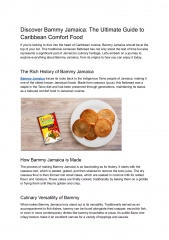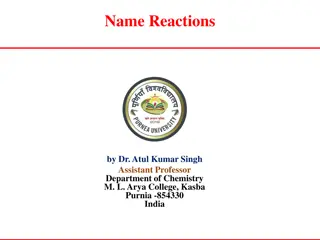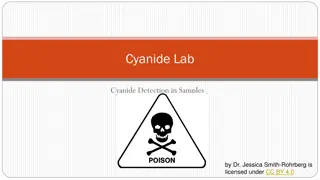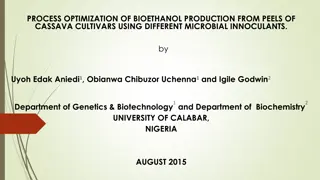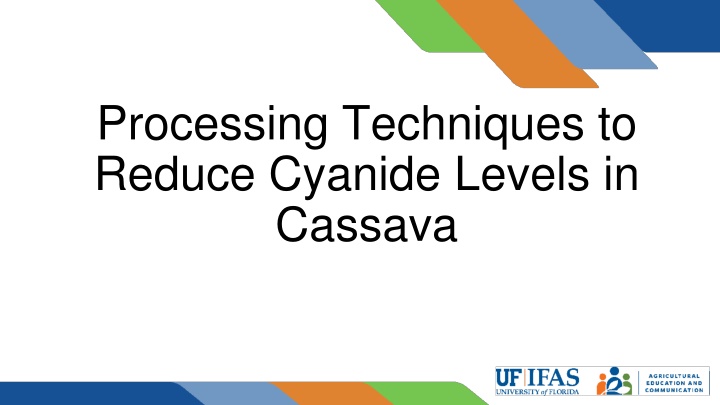
Reducing Cyanide in Cassava: Effective Processing Techniques
Learn about key methods like peeling, soaking, fermentation, cooking, and more to reduce cyanide levels in cassava. Discover how these techniques work and their effectiveness in ensuring safe consumption of cassava products.
Download Presentation

Please find below an Image/Link to download the presentation.
The content on the website is provided AS IS for your information and personal use only. It may not be sold, licensed, or shared on other websites without obtaining consent from the author. If you encounter any issues during the download, it is possible that the publisher has removed the file from their server.
You are allowed to download the files provided on this website for personal or commercial use, subject to the condition that they are used lawfully. All files are the property of their respective owners.
The content on the website is provided AS IS for your information and personal use only. It may not be sold, licensed, or shared on other websites without obtaining consent from the author.
E N D
Presentation Transcript
Processing Techniques to Reduce Cyanide Levels in Cassava
Peeling Method: Peeling involves removing the outer layer of the cassava, which is where cyanogenic glycosides are more concentrated. Effectiveness: While peeling helps reduce cyanide levels to some extent, it may not eliminate all cyanogenic glycosides, as they can penetrate into the inner tissues of the cassava.
Soaking Method: Cassava is soaked in water for an extended period, typically ranging from several hours to overnight. Effectiveness: Soaking helps leach out water-soluble cyanogenic glycosides, reducing their concentration in the cassava. Discarding the soaking water before cooking further minimizes cyanide content.
Fermentation Method: Cassava is fermented by allowing it to sit for an extended period, often with the aid of natural microorganisms or inoculants. Effectiveness: Fermentation breaks down cyanogenic glycosides into less toxic compounds, such as cyanohydrins. This process not only reduces cyanide content but also contributes to the development of desirable flavors and textures in fermented cassava products.
Boiling/Cooking Method: Cassava is boiled or cooked before consumption. Effectiveness: Cooking disrupts the cellular structure of cassava, causing the release and volatilization of cyanide gas. This results in a significant reduction in cyanide levels, making the cassava safe to eat.
Sun Drying Method: Slices or grated cassava is exposed to sunlight to facilitate drying. Effectiveness: Sun drying, coupled with subsequent cooking, has been shown to reduce cyanide levels. However, this method may be less effective compared to other processing techniques.
Method Combination Method: Employing a combination of processing methods, such as peeling, soaking, and cooking, can enhance the overall reduction in cyanide levels. Effectiveness: Utilizing multiple methods synergistically addresses cyanide content at different stages, providing a comprehensive approach to ensuring the safety of cassava for consumption.
Breeding Low Cyanide Variables Method: Agricultural research focuses on developing cassava varieties with naturally low levels of cyanogenic glycosides. Effectiveness: Plant breeding programs aim to create cassava varieties that are inherently safer for consumption, reducing the reliance on post-harvest processing to mitigate cyanide content.
Important! While these processing techniques can significantly reduce cyanide levels in cassava, it is crucial to emphasize the importance of culturally appropriate practices and education to ensure that communities are aware of and adopt safe processing methods. Additionally, adherence to these practices contributes to the overall nutritional and food security benefits of cassava consumption.


